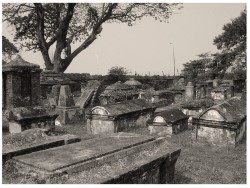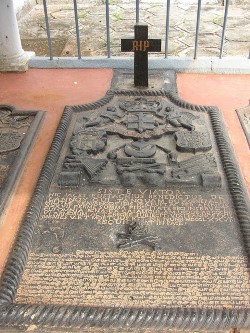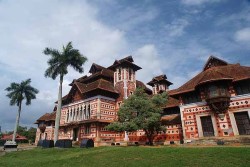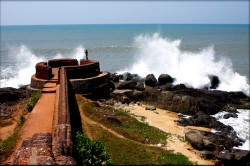Kerala - Reminiscence
Kerala, located in the southern tip of Indian republic, has always lured foreigners, both in the past and present times. The relics of European influence dot our landscape to this day: forts, churches, magnificent buildings representing western architecture, bridges and places named after them can be seen across the state. The contributions of the Europeans to the spread of education, advancement in the health segment, progress in administration/governance, for the growth of Malayalam language and in the spheres of charitable and cultural activities are exemplary. Administrators, missionaries and persons from the armed forces who contributed in no small way did not return to their homeland but buried deep in the land they served. Descendants of these dedicated men come down to Kerala to pay the respects to their ancestors who rest in eternal peace in a remote churchyard or cemetery.
Kerala, located in the southern tip of Indian republic, has always lured foreigners, both in the past and present times. The relics of European influence dot our landscape to this day: forts, churches, magnificent buildings representing western architecture, bridges and places named after them can be seen across the state.

The contributions of the Europeans to the spread of education, advancement in the health segment, progress in administration/governance, for the growth of Malayalam language and in the spheres of charitable and cultural activities are exemplary. Administrators, missionaries and persons from the armed forces who contributed in no small way did not return to their homeland but buried deep in the land they served. Descendants of these dedicated men come down to Kerala to pay the respects to their ancestors who rest in eternal peace in a remote churchyard or cemetery.
Right on top on this roll of honour is Ferdinand de Lannoy, the Dutch captain who surrendered to the Travancore forces but went on to make history by making his services available for serving the ruler of Travancore. To de Lannoy goes the credit of modernising the Travancore army and equipping the forces with ammunitions like cannons and guns, and the establishment of an ammunition manufacturing unit.

The British administration kept a supervisory control over the local kingdoms and thus gave shape and direction to a modern administrative set up. Colonel Munroe, the Resident of Travancore - Kochi, helped these states to put on track modern administrative practices and adopt forward looking policies. William Barton, who built the seat of government, the Secretariat building in Trivandrum, the Dutch Admiral Van Rheede, who steered the writing of the ‘Hortus Malabaricus’, a manual on the flora and fauna of the land, Robert and Rev Mead, who took the initial steps to introduce English education in Kerala, Benjamin Bailey who set up the first printing press in Malayalam, and Murdoch Brown, who set up the first opium plantation in Anjarakandy in Kannur (Cannanur), were all trail blazers in one way.
John Ross, Dr Robert Harvey, Frazer and Dr AC Mitchell, the Resident had aided in creating the framework for bringing western education into this land, Lt Horsley who built magnificent bridges which have stood the test of time, Caldecott opened up the skies with the establishment of the Observatory, Dr Brown and Dr Patterson who introduced the practice of lying in hospitals, modern methods of medical treatment belong to those illustrious group of Europeans who left their mark on the region.
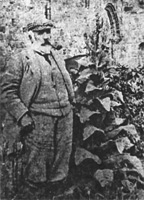
The first scientifically run teak plantation was a venture initiated by HV Cannoly. Father Clement prepared the first Malayalam dictionary, Arnos Padre was the one who as early as the 16th century compiled a Malayalam dictionary and a book on its grammar, and of course, Herman Gundert who brought about the well-researched Malayalam-English Dictionary and published the first newspaper. We cannot erase these names from the public memory when we trace the evolution of the vernacular in the state.
The Napier Museum in Thiruvananthapuram, which has a collection of rare artefacts, was conceived by Robert Chisholm, the principal of CMS College and the compiler of the Malayalam dictionary. Rev Richard Collins, and the personality who aided the writing of Kerala’s history, Canter Visscher, join the array of illustrious persons who moulded multifarious facets of the state.
The reputed Brennan College in Thalassery (Tellicherry) had its beginning as the Brennen School founded by Brennen. The authentic account of the Malabar area, ‘Malabar Manual’, was the result of a report submitted by the then collector William Logan. The author had put down for posterity a true picture of the land and its people as he saw it during his tenure. The Resident Cullen was a science writer too. Sir Robert Bristow who foresaw the potential of a port in Kochi is yet another one of those remarkable personalities who is remembered to this day. Many of these persons are part of present day academics: Herman Gundert for the Malayalam lexicon/dictionary, William Logan for the ‘Logan’s Manual’ which is reckoned as an authoritative and primary source of information on Kerala. Memories of many of the men who contributed to the advancement of the region remain alive in our minds with places and roads named after them. Barton Hill and Harveypuram in the state capital are other such examples. The little estuarine island of ‘Munrothuruthu’ between Trivandrum and Kollam was named after Resident Munro whose tenure in Travancore was an eventful one.
Kerala became the final resting place of many of the Europeans who did not return to their homeland after serving here. Robert Clogstan who lived close to the dense forests and river met with his end on 13th August 1843 in a watery grave in Chellampore, in the forested Nilambur region. His grave is situated in the forested area.
The forts constructed by the trading powers from Europe, Anjengo (Anjuthengu), located 30kms from Thiruvanathapuram, was built by the English East India Company, the Thalassery (Tellicherry) Fort in Kannur district and Fort St Angelos in Kannur town, initially established by the Portuguese and then taken over by the British – rise on the rocky promontories along the shoreline and remain a legacy from the past, a reminder of the colonisation of the country. The many minor forts like the one in Thangaserri, Kollam lie along the coastline. Forts, constructed by the local rulers before the Europeans set foot on the land, were razed to the ground by the incoming trading powers.
The Manuelkota, built by the Portuguese who were the first to set foot on Indian soil, named after their ruler, was later taken over by the Dutch and then the English who sounded its death knell. The Palakkad fort built by the French with the support of the Mysore ruler Hyder Ali has withstood the test of time, its ramparts still in tact after two and half centuries. The fort now is a major tourist attraction. Several years before Haidar Ali became a force to be reckoned with, the Bekal Fort (Kasargod) built by the Nayaks in 1625, is another structure that has remained untouched by man and the elements.
Forts were constructed as a protective barrier by local rulers, fiefs and the trading companies, to protect their interests and these have over the years became key points for reconstructing and studying the history of a region and the era.
